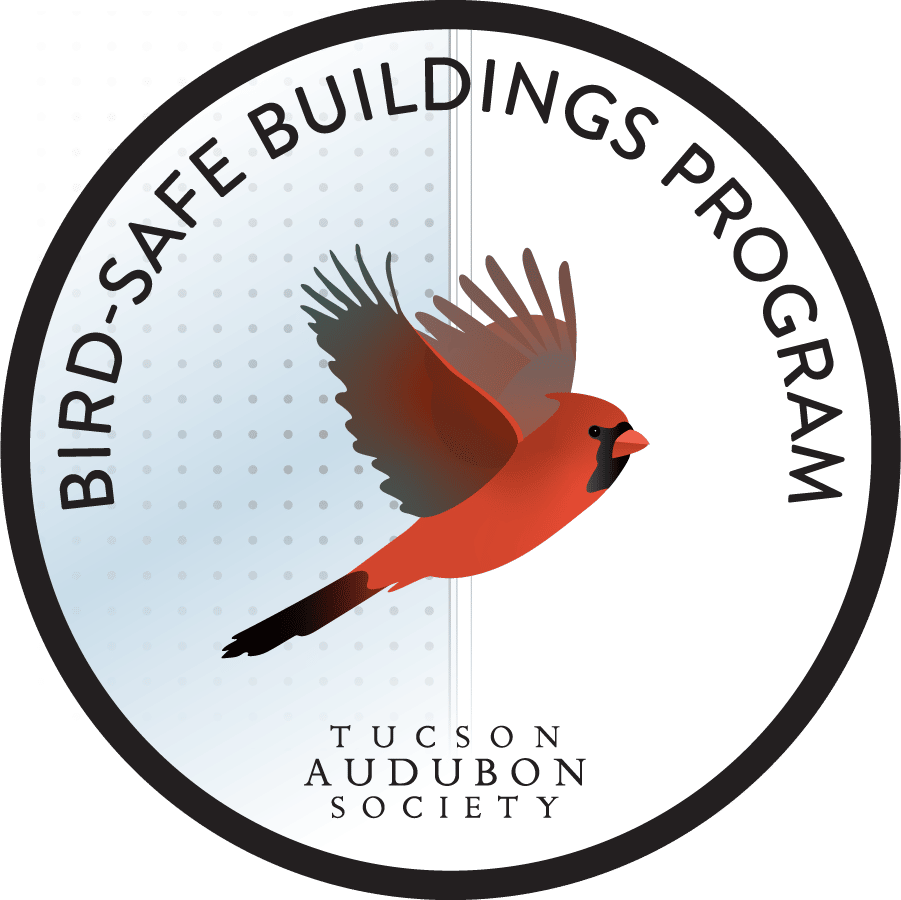Protect Birds & Their Habitats
Birding
Protect Birds & Their Habitats
Birding

Tucson, like many other cities, is experiencing rapid urbanization causing habitat loss for many species. Now more than ever a large number of birds are found near buildings, which puts them in danger.
Tucson Audubon’s Bird Safe Buildings initiative addresses both residential window strike prevention as well as dangers posed by large commercial buildings. This program creates a safe passage and residency for millions of birds in urban, suburban and rural settings.
Reflectivity
At certain times of day windows become mirror-like and reflect habitat across. Birds, not being familiar with that concept, try to get over to the patch of habitat inadvertently striking the glass.
Transparency
Windows located directly across from each other create a sense of possible passage for birds.
Lighting
Especially important during migration seasons, light can distract and confuse birds who either strike the windows or become caught in the disorienting beam of light.